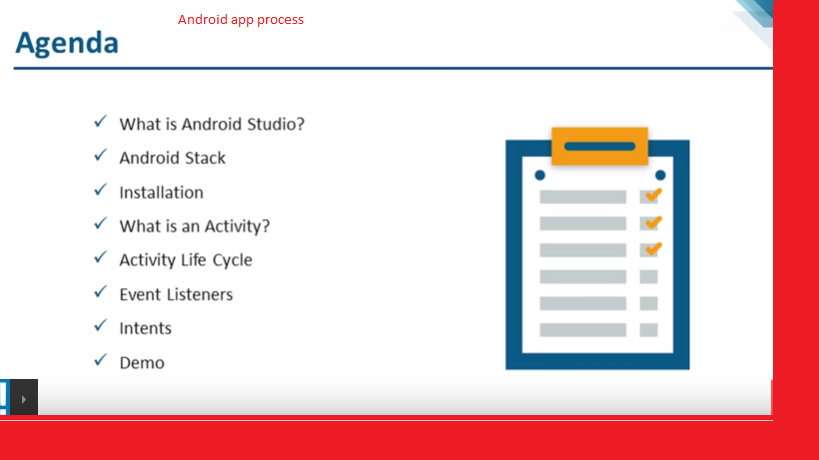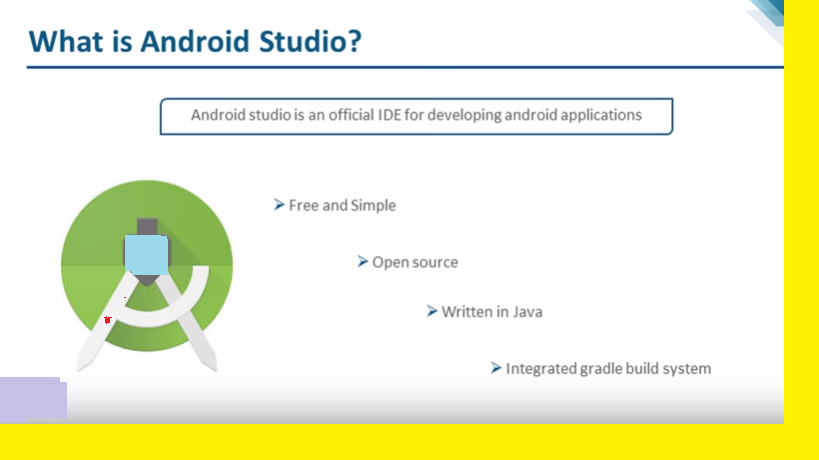Definition of Android -: Android is a operating system. It is an open source and Linux-based operating system for mobiles devices such as smartphones and tablet computers. Android was developed by the Open Handset Alliance companies.

Android is a software that providing the facility to creating a mobile application. by the help of this android programming we can create mobile app etc.
History of Android-: The first version of android it was the beta version of the Android Software.It was the SDK means Software Development Kit (SDK). It was developed and established by Google in 2007 where as the first commercial version of Android 1.0, was established in September 2008.
According the coding names has been given as like Aestro, Blender, Cupcake, Donut, Eclair, Froyo, Gingerbread, Honeycomb, Ice Cream Sandwitch, Jelly Bean, KitKat, Lollipop and Marshmallow.These are all android app version.
In 27 June 2012, at the Google I/O conference, Google announced the next Android version, 4.1 Jelly Bean. Jelly Bean is an incremental update, with the primary aim of improving the user interface, both in terms of functionality and performance.

System Requirements for Android Development-: Android is a open source software that can install all the platform but there are some system requirement for system these are
- Windows (XP or later), Linux (any recent Linux distribution) and Mac OS X (10.4.9 or later)
- Android Studio or Eclipse
- Android SDK
- Java
Linux requirement -:
- GNOME or KDE desktop Tested on Ubuntu® 14.04 LTS, Trusty Tahr (64-bit distribution capable of running 32-bit applications)
- 64-bit distribution capable of running 32-bit applications
- GNU C Library 2.19 or later
- 3 GB RAM minimum, 8 GB RAM recommended; plus 1 GB for the Android Emulator
- 2 GB of available disk space minimum,
4 GB Recommended (500 MB for IDE + 1.5 GB for Android SDK and emulator system image) - 1280 x 800 minimum screen resolution
- For accelerated emulator: Intel® processor with support for Intel® VT-x, Intel® EM64T (Intel® 64), and Execute Disable (XD) Bit functionality, or AMD processor with support for AMD Virtualization™ (AMD-V™)
Window requirement -: There are some requirement of the system when we are installing android these are
- Microsoft® Windows® 7/8/10 (32- or 64-bit)
- 3 GB RAM minimum, 8 GB RAM recommended; plus 1 GB for the Android Emulator
- 2 GB of available disk space minimum,4 GB Recommended (500 MB for IDE + 1.5 GB for Android SDK and emulator system image)
- 1280 x 800 minimum screen resolution.
- For accelerated emulator: Intel® processor with support for Intel® VT-x, Intel® EM64T (Intel® 64), and Execute Disable (XD) Bit functionality
Mac requirement -:
- Mac® OS X® 10.10 (Yosemite) or higher, up to 10.12 (macOS Sierra)
- 3 GB RAM minimum, 8 GB RAM recommended; plus 1 GB for the Android Emulator
- 2 GB of available disk space minimum,
4 GB Recommended (500 MB for IDE + 1.5 GB for Android SDK and emulator system image) - 1280 x 800 minimum screen resolution
Processor requirement -: Upper than i3 i5 or I7 developers must be concerned about the speed of the processor and number of cores. GHz Quad core Intel i3 processor would be enough to develop on Android.
Feathers of android -: As we know the android is a open source software we can use it free of cost. It providing many feathers as like
- Beautiful User Interface-:Android OS provide beautiful user interface to the user.
- Connectivity- Android providing the connectivity as like Bluetooth,WiFi,lte,Wimanx etc.
- Media support-: Android providing media support means here we can play all multimedia tools as like audio video etc
- Storage- It is providing a lightweight relation database that is use for data storage(SQLite).
- Web browser-: It is based the open source webkit layout engine, coupled with google Chrome’s JavaScript engine supporting HTML 5 and CSS3
- Messaging-: It also support messaging tools as like sms mms etc.
- Multi-touch-: Android has native support for multi-touch which was initially made available in handsets.
- Multi-tasking-: User can jump from one task to another and same time various application can run simultaneously. it is providing multitask facility.
- Multi-Language-:It support many languages as like Hindi,English etc.
- Google Cloud Messaging-: It is a service that lets developers send short message data to their users on Android devices, without needing a proprietary sync solution.
- Android Beam-A popular NFC-based technology that lets users instantly share, just by touching two NFC-enabled phones together.